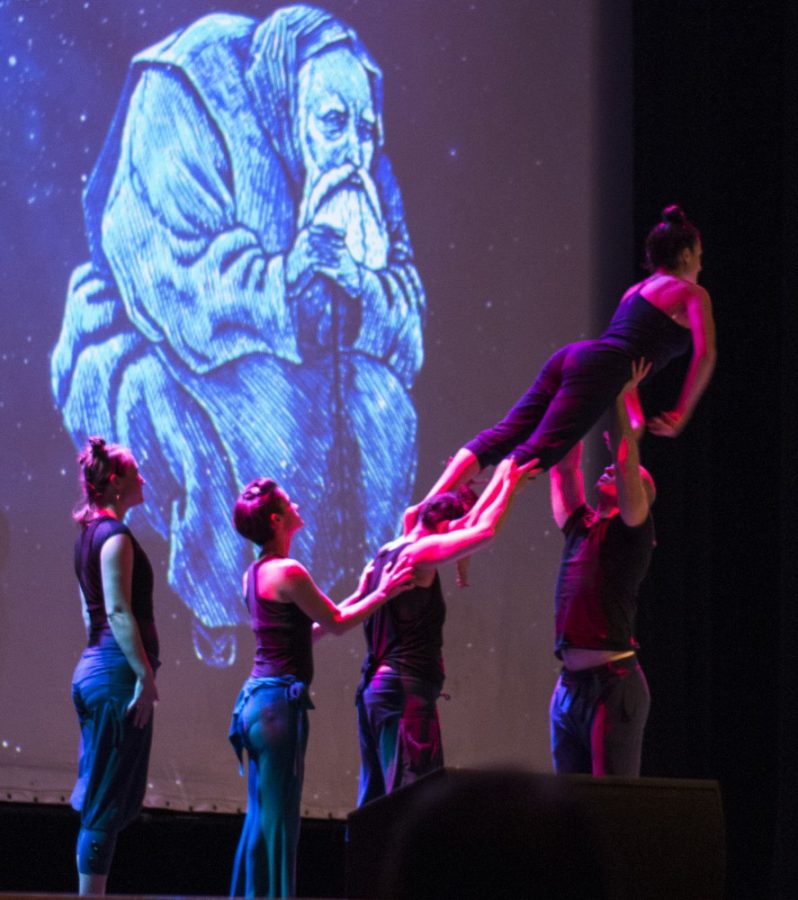Bennuval, a family-friendly variety show, was put on by the College of Humanities faculty in correspondence with local artists and musicians on Sat, Dec. 1.
Bennuval was designed to “celebrate the spirit of human curiosity, culture and knowledge, from the ancient myths of the stars to the modern scientific exploration of our universe,” according to the Bennuval website. The event is also for celebrating the spacecraft OSIRIS-REx’s projected contact with the asteroid Bennu on Monday, Dec. 3, and to explore the relationship between science and the humanities.
“It’s just really interesting to sort of emphasize the notion that human curiosity has extended from those ancient times to now and some of the same questions are still relevant,” said Eric Swedlund, senior writer at the College of Humanities. “They’re still the fundamental questions that people ask, so it’s just interesting to present to the public that science, humanities and arts are not separate; they are really kind of more tied in together than people think.”
The event contained modern dance, poetry, live music, improv, science presentations and videos and storytelling, all to convey the relationship between science and the humanities, especially in the case of OSIRIS-REx and Bennu.
RELATED: One small step, no small feat: UA’s long history with NASA
The name “Bennu” was chosen out of thousands of student entries in a global contest by UA and was entered by 9 year old Mike Puzio from North Carolina. Puzio said he submitted “Bennu” because he thought that OSIRIS-REx looked like the gray heron Bennu in Ancient Egyptian cosmology.
“We actually have an egyptologist to talk about the myth itself and sort of reinforce those connections about how they’re exploring and in the Egyptian myth, though they’ll go into it more, but [it’s] sort of like the origin of life, and they’re searching in the asteroid for basically their biological origins of life on Earth,” Swedlund said on the mythology in the show. “It’s kind of that two halves: The ancient people looked at the stars and were trying to figure out [how] life began, and the modern people are taking rocket ships and going to asteroids to figure out how life began. So it’s sort of that tie between the two.”
Overall, the event was well received, and there were attendees of all ages and backgrounds, such as families, senior citizens and students.
“I really liked it. It’s very interesting, not what I expected, but I guess I didn’t know what I was expecting in the first place,” architecture student Kevin Choi said. “It’s really creative the way it’s all brought together in a cohesive, entire performance.”
RELATED: UA Churchill Scholar rises above the male-dominated competition
Kevin said he appreciated the theme of the relationship between science and the humanities, explaining that he related this his major being a mix of both art and science.
Bennuval also brought the Tucson community together for a more in depth look at humanity’s relationship with science and our Earth.
“Really what we’re trying to get across with this show is that whether you’re in humanities or science, even though those may not seem like they are similar, we’re really all kind of after the same thing,” said Helen Bernard, director of external & alumni relations at the UA College of Humanities. “We’re trying to ask the question ‘Why are we here?’ whether it’s through space exploration or exploration of another culture or society.”
Follow the Daily Wildcat on Twitter








